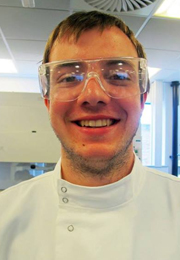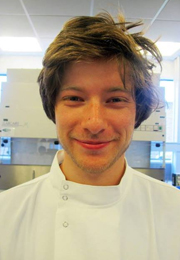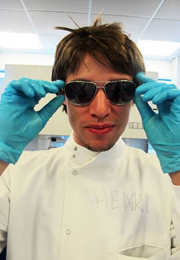Team:Exeter/Modelling
From 2013.igem.org
(→The pathways: Changed to the model. It describes the model in detail and is split into three steps) |
(hid assumptions, added results, analysis, conclusions, future and bibliography section) |
||
| Line 41: | Line 41: | ||
== The model == | == The model == | ||
| - | This section will go into detail about the workings of the model. | + | This section will go into detail about the workings of the model. Each will explain the workings of the model, the justification, the assumptions made and the advantages and disadvantages of the methodology |
=== Sensor activation rate === | === Sensor activation rate === | ||
| - | This subsection will explain how the activation rate of sensors is determined and provide some justification of the method | + | This subsection will explain how the activation rate of sensors is determined and provide some justification of the method. |
=== Kappa model === | === Kappa model === | ||
| Line 59: | Line 59: | ||
--> | --> | ||
| + | == Results == | ||
| + | |||
| + | This section will list in detail the results of our model | ||
| + | |||
| + | == Analysis == | ||
| + | |||
| + | This section will contain what the data means | ||
| + | |||
| + | == Conclusions == | ||
| + | |||
| + | This section will contain our conclusions about the model | ||
| + | |||
| + | == Future == | ||
| + | |||
| + | This section will contain our opinions about the future of the model | ||
| + | |||
| + | == Bibliography == | ||
| + | |||
| + | <!-- | ||
== Assumptions == | == Assumptions == | ||
Due to the complexity of biological systems our model will include but not be limited to the following assumptions: | Due to the complexity of biological systems our model will include but not be limited to the following assumptions: | ||
| Line 69: | Line 88: | ||
* Bacteria do not interact | * Bacteria do not interact | ||
* Only pathway specific species are rate limiting | * Only pathway specific species are rate limiting | ||
| - | + | --> | |
<!-- == The Plan == | <!-- == The Plan == | ||
Revision as of 15:51, 2 October 2013
Introduction
Our model predicts how the absorbtion spectrum of a modified E.Coli changes over time in response to a given incident light spectrum. It is used to estimate key properties of our system such as stability, development time of image, the balance of colours and has three steps to its operation.
Currently the model is based on results from literature and theoretical conjecture as experimental results are not available. The motivation for the model was to numerically characterize our bio-bricks for future use and to help us create the first colour coliroid. With experimental results the model could readily be updated to fulfill its original mandate.
The Team
Physics |
Physics |
Electrical Engineering |
Modelling Software
The model uses two programs; [http://www.mathworks.co.uk/products/matlab/ MATLAB] and KaSiM combined using a batch file.
KaSiM is a [http://en.wikipedia.org/wiki/Stochastic stochastic] simulator that executes files written in [http://www.kappalanguage.org/ Kappa]. Kappa is a rule based modeling language for protein interaction networks.
MATLAB® is a high-level language and interactive environment for numerical computation, visualization, and programming. It can be used to analyze data, develop algorithms, and create models and applications.
Together they provide the necessary tools to create an accurate model of our bio-camera system.
The model
This section will go into detail about the workings of the model. Each will explain the workings of the model, the justification, the assumptions made and the advantages and disadvantages of the methodology
Sensor activation rate
This subsection will explain how the activation rate of sensors is determined and provide some justification of the method.
Kappa model
This subsection will explain the kappa model. How it works, the justification for its use,
Absorbtion spectrum
This subsection will explain how the absorbtion spectrum of the cell is calculated and justify the method.
Results
This section will list in detail the results of our model
Analysis
This section will contain what the data means
Conclusions
This section will contain our conclusions about the model
Future
This section will contain our opinions about the future of the model
 "
"







